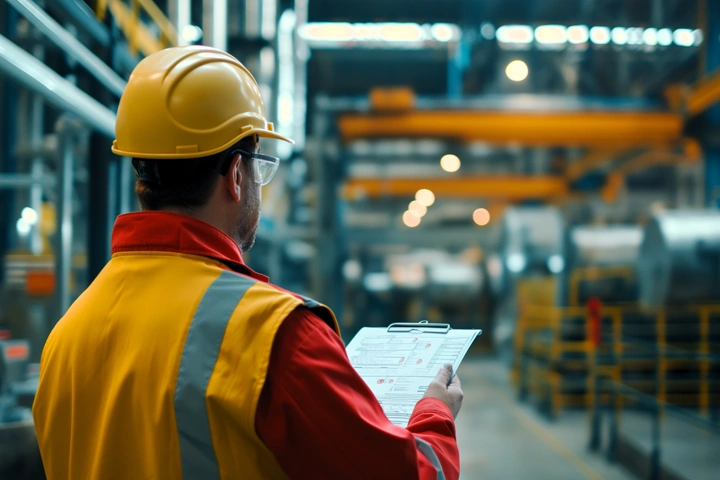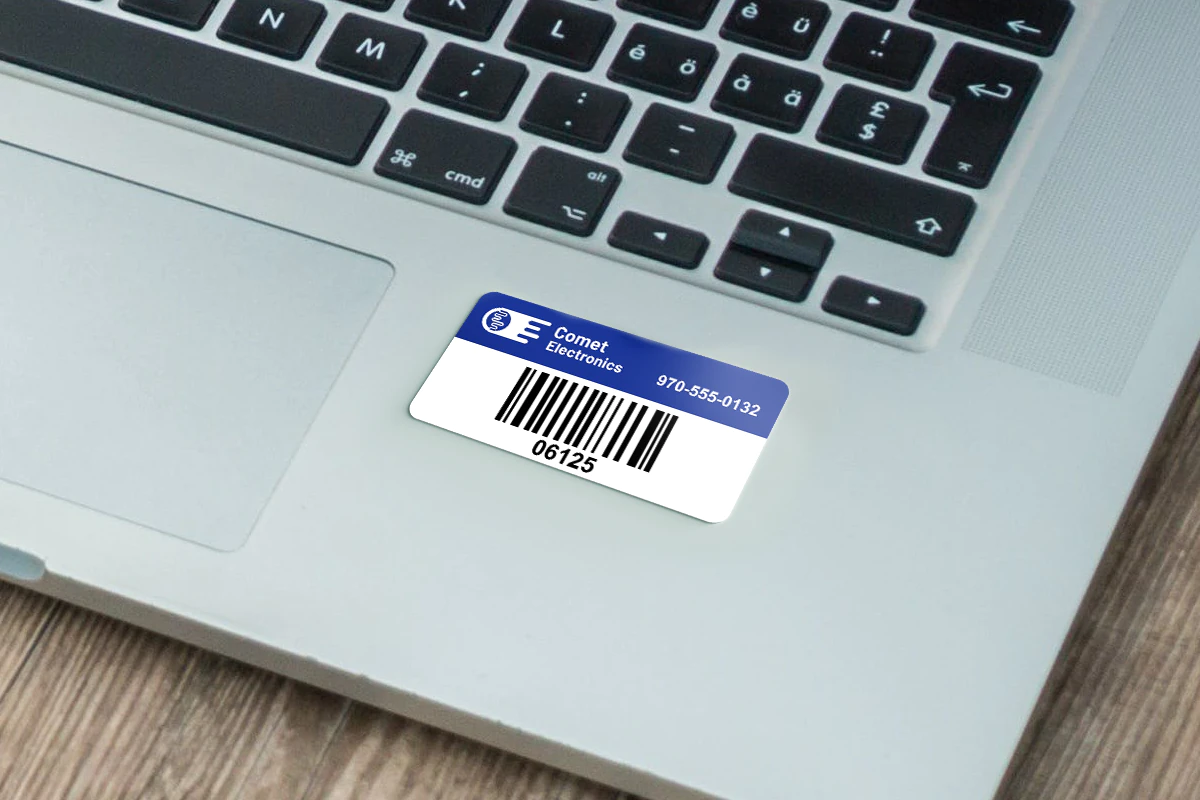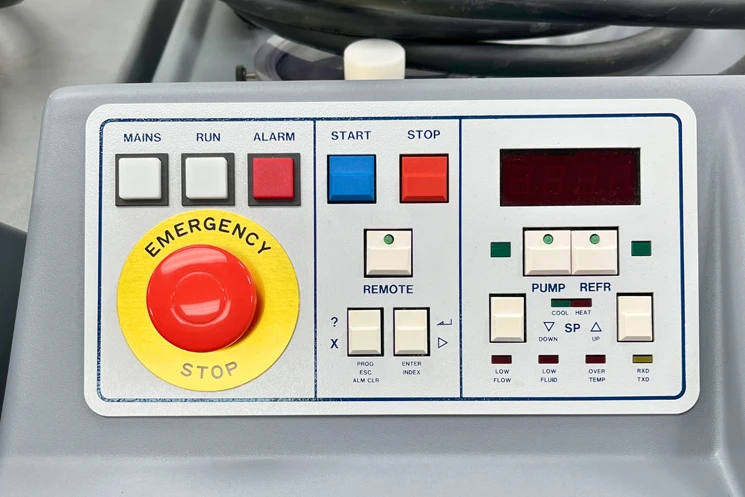Construction equipment asset management is essential for keeping projects on schedule, reducing equipment losses, and ensuring that tools and machinery are properly maintained. Learn more about managing construction assets effectively on our Construction Labels.
Construction companies rely on physical assets—everything from heavy machinery to handheld tools—to complete their work efficiently. However, mismanagement of these assets can lead to delays, extra costs, and even safety issues.
By implementing effective strategies, such as an asset tracking system, asset tagging, and utilizing real-time data, businesses can ensure their assets are accounted for, maintained, and readily available when needed.
In this article, we’ll explain what construction asset management is, why it’s important, and how to implement it in a way that fits your company’s needs.
Asset Management in Construction Industry
Construction asset management is about tracking, managing, and maintaining physical assets in the construction industry. These assets include construction equipment, tools, vehicles, and even consumables like safety gear or spare parts.
The goal of asset management in the construction industry is to ensure that all equipment is:
- Properly maintained to reduce downtime.
- Accounted for to avoid losses or theft.
- Available when and where it’s needed for a project.
Construction companies can use modern tools like an asset tagging system or an asset tracking system. These tools help them track their assets in real time. This improves efficiency and reduces unnecessary costs.

Why Is Construction Asset Management Important?
Construction companies face unique challenges due to the scale of their operations and the variety of physical assets they need to manage. Here’s why asset management in construction is crucial:
1. Prevents Loss and Theft
Equipment loss and theft are significant problems for construction companies. Without a clear system for tracking assets, tools and machinery can easily go missing, leading to costly replacements and delays.
2. Ensures Proper Maintenance
Construction equipment needs regular maintenance to stay in good working condition. Real-time data from an asset tracking system can help you schedule maintenance proactively, preventing unexpected breakdowns.
3. Increases Efficiency
Having the right tools available when needed is critical for keeping projects on track. Asset management ensures your team can access the construction equipment they need without wasting time searching for missing items.
4. Improves Cost Control
By tracking and organizing assets, companies can avoid over-purchasing or renting unnecessary equipment. Asset tagging provides visibility into what’s already available, saving money in the long run.
How Does Construction Asset Management Work?
Effective construction asset management relies on several key components:
1. Asset Tagging and Asset Identification
The first step in managing assets is assigning each item a unique identifier, such as a serial number or a tag. Tags can take many forms, including:
- QR codes: Scannable codes that provide detailed asset information.
- RFID tags: Radio-frequency identification tags that allow for quick and wireless tracking.
- Asset labels: Durable labels placed on equipment for easy identification.
These tags allow companies to identify and track their assets in real time, ensuring that each piece of equipment is properly logged and accounted for.
2. Asset Tracking System
An asset tracking system uses technology like barcode scanners, mobile apps, or GPS to provide real-time data on where assets are located and how they’re being used. For example:
- You can track construction equipment as it moves between job sites.
- Tools checked out to specific workers can be monitored to ensure they’re returned.
- Maintenance schedules can be automated to prevent downtime.
This system gives construction companies full visibility into their equipment, reducing the risk of loss and improving overall efficiency.
3. Real-Time Data and Reporting
Access to real-time data is one of the biggest benefits of modern asset management tools. Construction companies can monitor their assets’ status, usage, and location instantly, which helps in making faster, better decisions.
For example, if a team underutilizes equipment on one site, they can reassign it to another project. You can plan upcoming maintenance to avoid scheduling conflicts.

Benefits of Asset Tagging in Construction Asset Management
Asset tagging is a cornerstone of effective asset management, and its benefits go beyond simple organization. Here are some key advantages:
1. Enhanced Tracking Assets in Real Time
With an asset tagging system, construction companies can track their equipment and tools across multiple job sites. This eliminates the guesswork and ensures that items are always in the right place at the right time.
2. Improved Accountability
When every piece of equipment has a unique identifier, it’s easier to assign responsibility to specific employees or teams. This reduces the risk of theft or misplacement and creates a culture of accountability.
3. Streamlined Project Management
Efficient asset management goes hand in hand with better project management. Knowing exactly what tools and equipment are available allows project managers to plan more effectively and reduce delays caused by missing or unavailable assets.
4. Cost Savings
Tagging and tracking assets ensures that construction companies avoid unnecessary purchases or rentals. It also extends the lifespan of equipment by helping teams stay on top of maintenance.
Types of Asset Tags for Construction Asset Management
There are several types of tags used in asset tagging systems, each suited to different needs in the construction industry:
- QR Codes: Great for storing detailed information, such as the maintenance history or location of an asset.
- RFID Tags: Ideal for tracking assets over large areas without needing a direct line of sight.
- Barcode Labels: Cost-effective and easy to use, these are perfect for smaller tools and consumables.
- Durable Asset Labels: Designed for heavy-duty use, these labels can withstand harsh environments commonly found on construction sites.
Selecting the right type of tag depends on the nature of your assets and the level of detail you need to track.
How to Implement Construction Asset Management
Here’s a step-by-step approach to implementing an effective system:
Inventory Your Assets: Start by listing all your physical assets, including tools, vehicles, and construction equipment. Assign a serial number or tag to each item.
Use an Asset Tagging System: Choose tags (like RFID tags or asset labels) that suit your needs. Apply them to all equipment for easy tracking.
Adopt an Asset Tracking System: Invest in software that provides real-time data on your assets, including location, status, and maintenance schedules.
Train Your Team: Ensure your team understands how to use the system, including scanning tags and updating asset information.
Monitor and Adjust: Regularly review your system’s performance to identify areas for improvement.
Manage Your Construction Equipment
Effective construction asset management is critical for ensuring your company’s success. By implementing strategies like asset tagging systems, real-time data tracking, and organized maintenance schedules, construction companies can improve efficiency, reduce costs, and avoid unnecessary delays.
Take the first step by exploring modern solutions for asset identification and tracking. With the right tools in place, managing your construction equipment will be easier than ever.
Construction Asset Management FAQ
Construction asset management is the process of tracking, organizing, and maintaining physical assets, such as tools, equipment, and vehicles, in the construction industry.
The benefit of asset tagging includes improved tracking, better accountability, reduced loss, and cost savings by organizing and monitoring assets efficiently.
Common types include QR codes, RFID tags, barcode labels, and durable asset labels, depending on the equipment and tracking needs.
Real-time data allows companies to monitor equipment status, location, and maintenance needs instantly, improving decision-making and efficiency.
An asset tracking system ensures all tools and equipment are accounted for, maintained on schedule, and available when needed, reducing downtime and costs.



